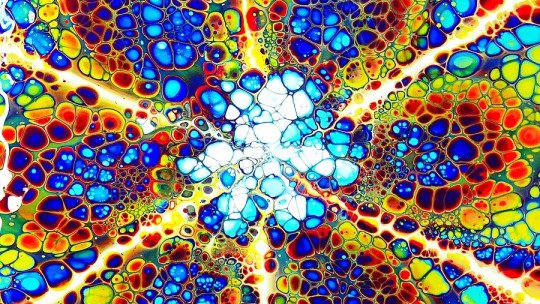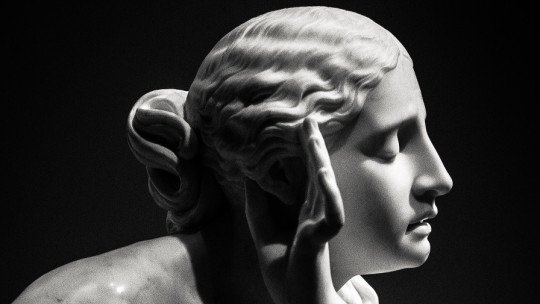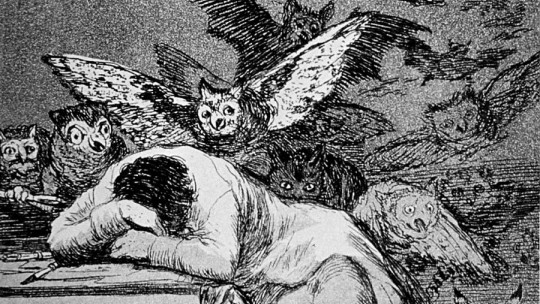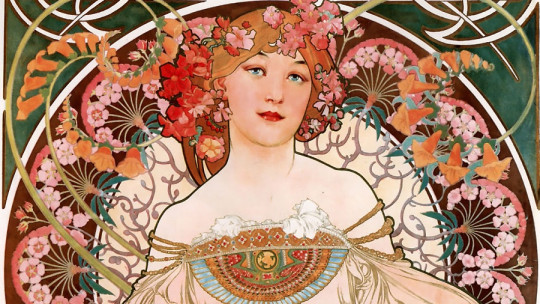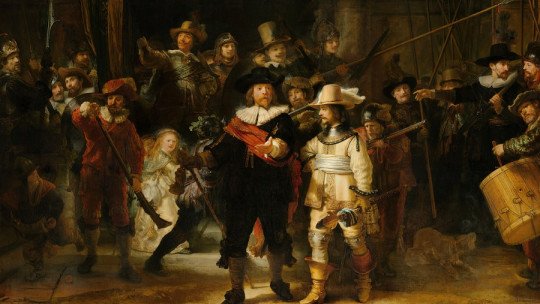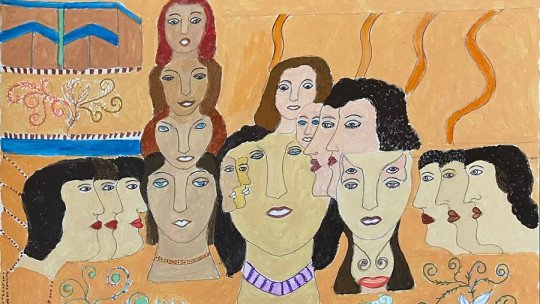In the 1950s, the United States government was very interested in knowing the effects that LSD had on the mind. The drug was of a new design and was going to be the main cause of the emergence of what is known as psychedelic art, the multicultural movement that took over artistic creation around 1960.
The psychiatrist Oscar Janiger (1918-2001), known for his studies on the effects of this substance, injected a controlled dose of LSD into an artist with the aim of analyzing his production while he was under the effects of the drug. The result, captured in nine drawings, was surprising. As the hallucinogenic substance took over the man’s mind, his drawings became more delirious, until they reached the purest abstraction. At the same time, the subject began to speak in an apparently incoherent manner, to walk around the room and to be frightened by “things” that were on the floor and that the doctor obviously did not “see.”
To paraphrase the language of psychedelic artists, man was “opening the doors” of the mind and entering other worlds. That is the path that many creators followed, and not only in the 20th century: the use of psychotropic substances to produce.
What is psychedelic art? Why did it resonate so much with artists of the 1960s? What influences did it have on the cultural panorama of the time? In this article we are going to find out.
What is psychedelic art? A story of drugs and art
Although psychedelic art is known as art that developed in the 1960s from experimentation with drugs (especially LSD), in reality the name refers to any art that captures the life of the human psyche. In this sense, we could say that German expressionism of the early 20th century or later surrealism are also psychedelic art.
In fact, the word psychedelia (specifically, the English term, psychedelic) comes from two Greek words and means something like “manifesting the soul.” It was coined in 1957 by the psychologist Humphry Osmond (1917-2004) to refer to the manifestations that occurred based on the effects of certain substances. Soon, the idea took shape and began to refer to the art that proliferated in those years and that based its inspiration on the hallucinogenic effects of some drugs. These effects (the famous psychedelic effect) involved causing phenomena such as synesthesia and alterations in perceptions and the sense of time and place.
The conjunction of art and drugs is as old as time There is evidence of many cultures that created their art in psychotropic states, and in the West many artists consumed narcotics such as laudanum or opium to give “free rein” to their creativity. The use of other types of drugs, such as alcohol, was also common; At the end of the 19th century, absinthe was very successful, a very strong alcoholic beverage extracted from wormwood, which caused similar alterations and caused a sensation among Parisian bohemian artists.
LSD or lysergic acid: the great phenomenon of the 60s
In the case of psychedelic art of the mid-20th century, a fairly novel drug, discovered in 1938 by the chemist Albert Hoffman (1906-2008), had a lot to do with its appearance. The scientist was in the midst of research to find a substance that stimulated the circulatory system, so, at first, LSD was used in a strictly medical field.
The unpredictable effects of the substance soon became apparent. The main component of LSD is extracted from ergot , a parasitic fungus of these cereals that, when consumed, produces hallucinations. In fact, during the Middle Ages there were cases of “demoniacs” who were nothing more than peasants who had consumed infected rye and who had suffered its terrible consequences.
LSD has lysergic acid in its composition, one of the substances in ergot. This is why psychedelic art is also known as lysergic art, because it is so connected to the consumption of this type of drug. The hallucinogenic effects of this component soon provoked scientific curiosity, and there were many “official” experiments that were carried out, such as the one carried out by Dr. Oscar Janiger (cited in the introduction), who dedicated much of his professional career to study the effects of LSD.
In the 1960s, lysergic acid spread like wildfire among “counterculture” artist communities Various singers, writers, painters and artists began obsessive consumption of LSD to spur their creativity. Therefore, psychedelic art is not only a plastic art, but also encompasses other fields such as writing and music.
Famous is the case of the group The doors, whose rise occurred precisely during the period of greatest consumption of this substance. The name of the group already speaks for itself: The doors, a very clear reference to access to other worlds that only substance consumption could allow. Specifically, the name is inspired by the work that the British writer Aldous Huxley (1894-1963) published in 1954, titled The doors of the perception, in which he analyzed, precisely, the effects of drug consumption; in this case, mescaline.
Access to dreamlike and unreal worlds
William Blake (1757-1827) already wrote down, as early as 1793, some famous verses that referred to doors that open to show other worlds. In this case, the British artist was referring to the need to open the mind to other realities that would allow human beings to perceive the true infinity of things In other words; Men and women live locked in their mental prison, and the only way to liberate themselves is to open themselves to these worlds that they do not even suspect exist.
Unknowingly, Blake was defining what psychedelic art would become. This initiation into the infinite, into worlds that lie beyond everyday human perception, was also the basis of 19th century Romanticism and other movements such as Pre-Raphaeliteism, Symbolism and Surrealism. However, psychedelic art of the 20th century took this “opening of doors” to the limit.
The psychedelic art of the 1960s goes beyond the dream worlds that the Romantics could create, or the nightmarish images that the Surrealists captured on their canvases. The artists of the 60s and 70s transmit sensations, altered states of consciousness, in which nothing has form, meaning, or meaning.
Thus, Kaleidoscopic patterns and fractals are typical in the plastic works of these artists represented with colors that, so bright, often hurt the eye.
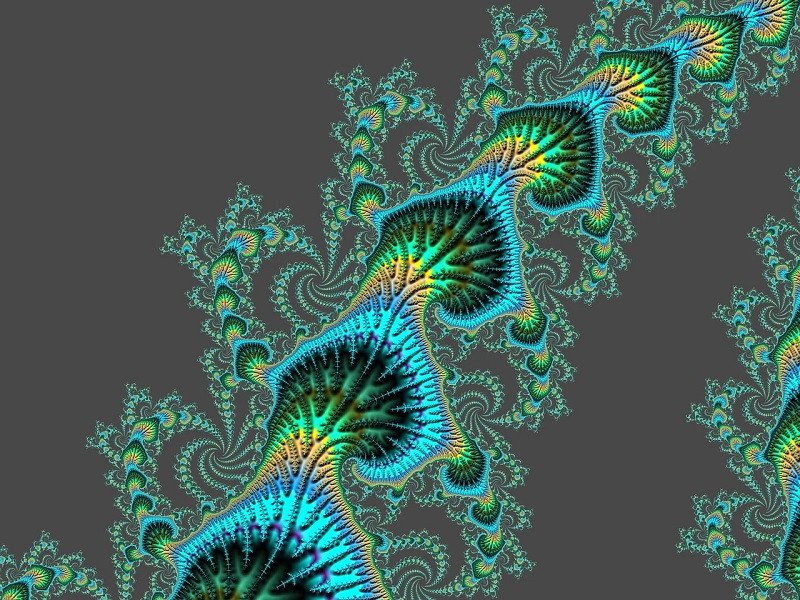
Also very popular are phosphenic motifs, that is, those inspired by optical effects, especially caused by mechanical or electrical stimulation, which later will be the basis of other currents such as op art. The idea was to stimulate the viewer’s retina and make it travel, as if they were suffering the hallucinations typical of LSD consumption.
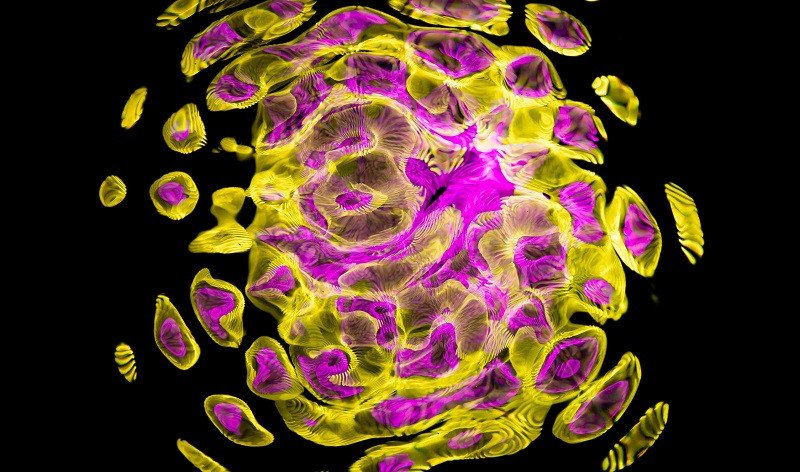
But, as we have already said, psychedelic art was not only reflected in the plastic arts. The world of music was greatly inspired by this idea. Psychedelic musical groups of the 60s and 70s tried to recreate, through music, the experiences derived from drug use. To do this, and with the aim of capturing the “evasion” that their consumption represented, they introduced non-Western musical elements, such as the Indian sitar, and the lyrics of the songs were often encrypted and surreal. This is the case of the last stage of the Beatleshighly influenced by psychedelia, from the group The Jimi Hendrix Experience or the aforementioned The Doors.
In literature, the psychedelic world also left its mark Not that it was anything new; It had been more than a century since writers had published their experiences with drugs. In 1822, Thomas de Quincey (1785-1859) published Confessions of an English opium eater. Four decades later, it was her turn to one of the cursed poetsCharles Baudelaire (1821-1867) with his artificial paradises (1860). And, more recently, and in a clear precedent of the psychedelic era, we find the aforementioned Aldous Huxley (the inspiration for the name of The doors), and Antonin Artaud (1896-1948), with his Trip to the country of the Tarahumara (1948), in which he recounted his foray into peyote.
In all works, in all artistic disciplines, a leitmotif: the desire to escape to other worlds and find creativity in them (and perhaps also peace of soul) so eternally longed for by human beings.

